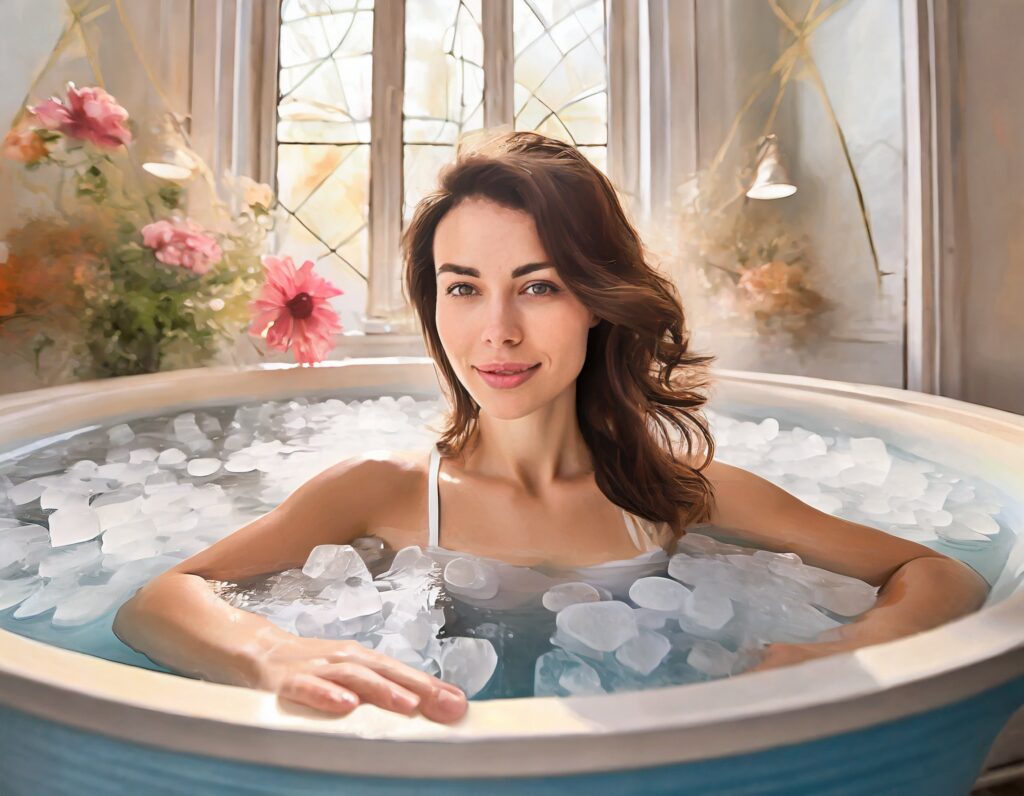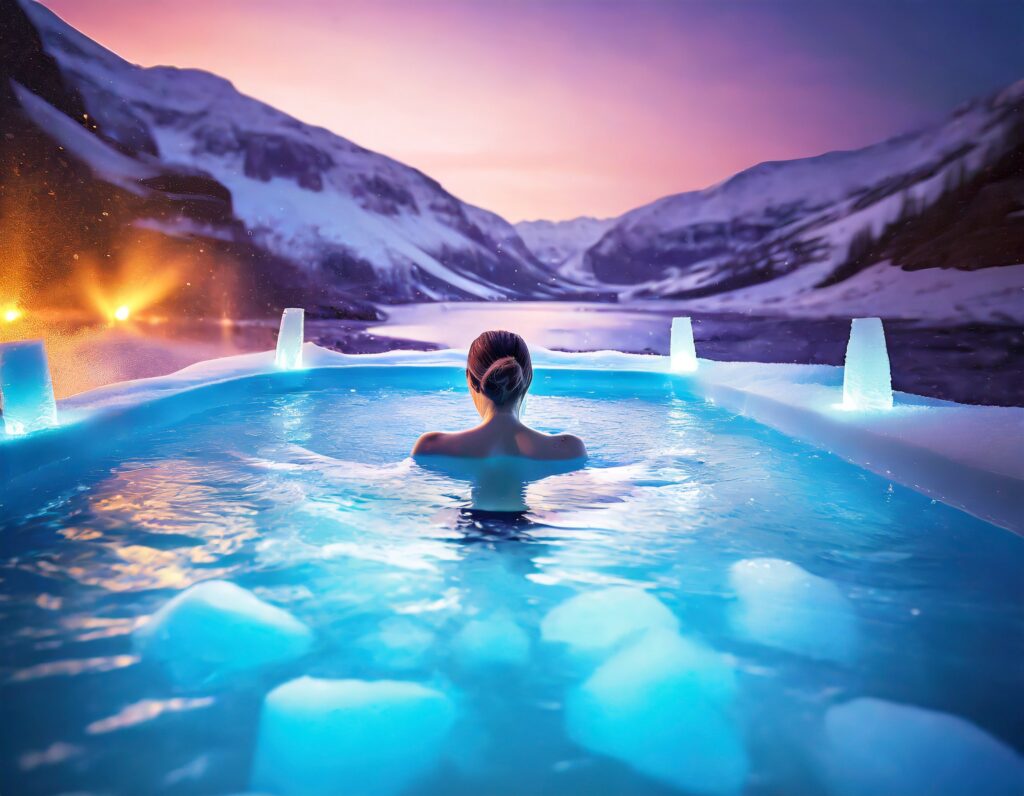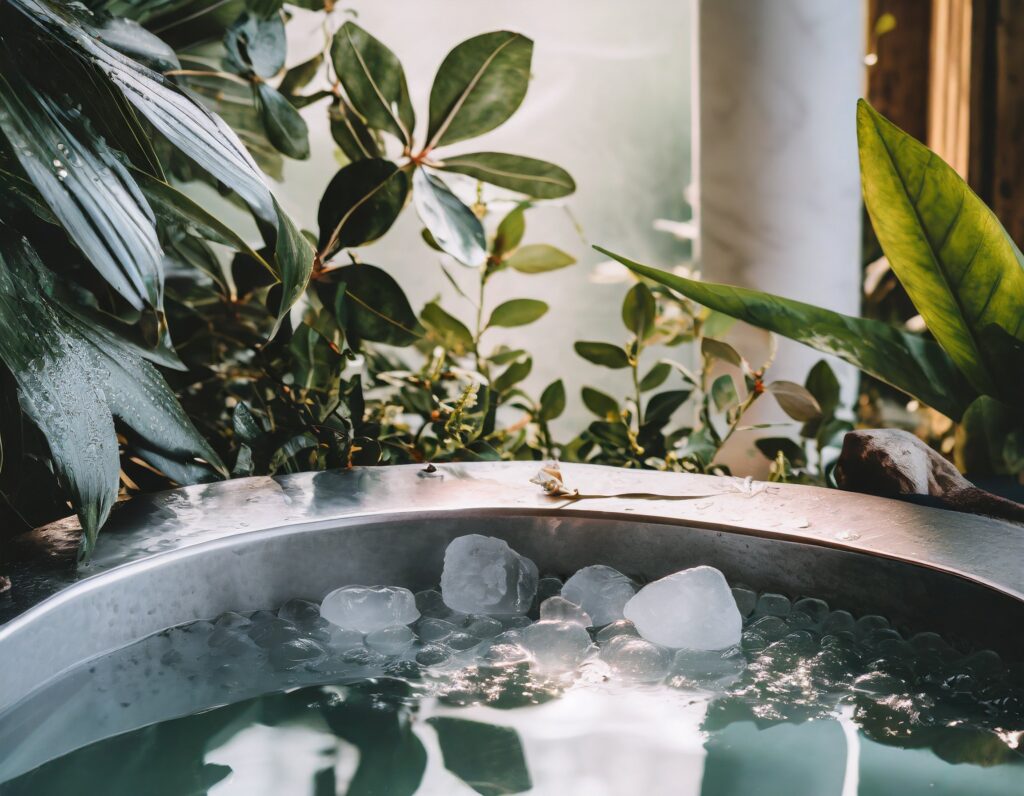Benefits of Ice Baths for Wellness
Ice baths are an ancient wellness practice that offers a surprisingly large list of health benefits. Cold water immersion therapy can improve your physical and mental health, and be a relief to modern-day stressors. Spending just a couple of minutes in an ice bath can relax your muscles, boost your immunity, and improve the quality of your sleep.
Sounds enticing, doesn’t it? Keep reading and find out what are all the wonderful benefits of ice bathing and how to properly prepare for it!
Cold Water Immersion Therapy
Ice baths, known more formally as “Cold Water Immersion Therapy”, have been in use for centuries. The oldest known practices date back to the times of ancient Greeks and Romans. Each generation passed on the ancient wisdom to the next one, preserving the knowledge of the powers of cold water. The practice of ice bathing is actually simple and straightforward. To perform an ice bath, you immerse yourself in a tub filled with cold water for a set period of time.
You might have seen famous athletes using ice tubs after an exhausting football match or after working out in the gym. Indeed, the sports community has sworn by the benefits of ice bathing to both help with muscle recovery and improve performance. However, ice baths are much more than just a cool-down routine for athletes. You don’t need to be a sports superstar or a famous fitness trainer to be able to unlock the full potential of cold plunging. The appeal of ice bathing extends to people from all walks of life as a means of achieving and maintaining optimal health and well-being.
After the initial discomfort of the cold water, both the body and mind undergo a transformative experience. Ice tubs unlock several benefits that include:
- reduced inflammation,
- improved sleep,
- increased metabolism,
- stress reduction, and
- a stronger immune system.
In other words, the icy waters function as a beneficial shock to your body and mind. Now, you might be thinking a few things, such as:
“Are these benefits genuine, or just tales from hardcore ice bathers?”
“Can lying in a tub full of cold water really help me maintain or improve my overall wellness?”
The answer is yes, and various scientific studies and anecdotes from practitioners can confirm the positive impacts. To fully understand the upside of this wellness practice, let’s dive deeper. We’ll explore the historical background of ice baths, the science behind them, and the multitude of advantages that ice baths can bring to an individual’s health and wellness.
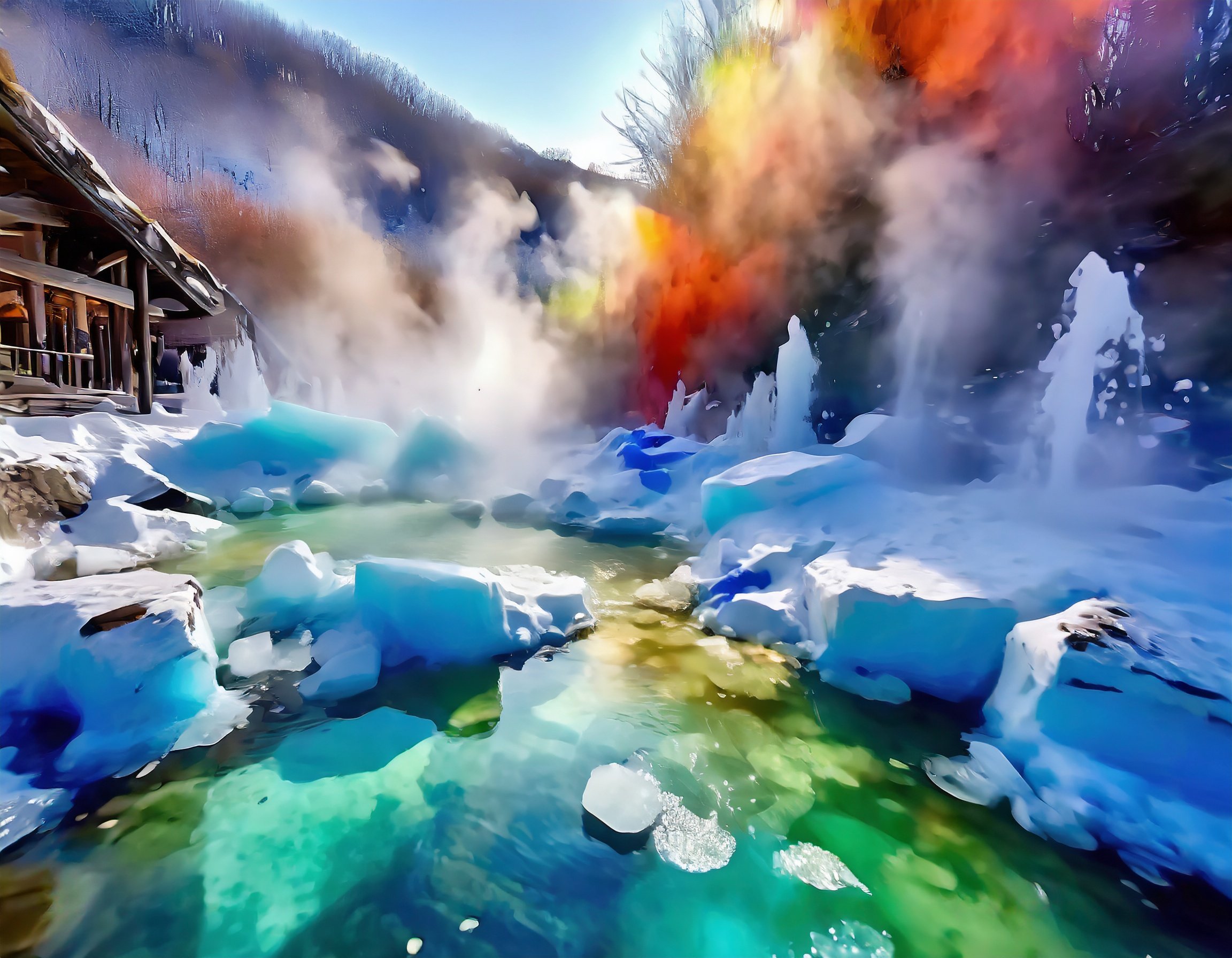
What are ice baths and how do they work?
Ice Baths – Definition and History
An ice bath is a bath filled with icy cold water, and occasional ice cubes for some extra chill. Plunging in such cold water, which is often known as “Cold Water Therapy”, is more than a modern wellness trend. Civilizations have utilized ice baths for various forms of healing and rejuvenation for centuries.
Fast forward to the modern day, we know these practices under the umbrella term “hydrotherapy”. Many wellness enthusiasts and Olympic athletes swear by the ice bath recovery method, so it’s no wonder that its popularity has skyrocketed recently.
You might have also heard about the Wim Hof method of cold plunging, that went viral recently. Wim Hof, also known as “The Iceman”, promotes ice baths as a great health improvement and wellness therapy. You can read more about the Wim Hof method here.
The Ice Bath Process
How should you prepare for an ice bath?
While it can rely heavily on personal preferences, we will present the typical ice bathing route. The first step is preparation. When preparing an ice bath, it is important to set the temperature of the water. Aim for a temperature within 10 to 15 degrees Celsius (50 to 59 degrees Fahrenheit). You can additionally adjust the temperature by adding ice cubes.
Cold water plunging
After you’ve adjusted the water temperature, then comes the actual plunge. Initial moments in the icy water can be shockingly chilling, causing a natural instinct to exhale. The key is to focus on breathing and to maintain slow, deep breaths. Some people might start shivering, which is a natural response to adjusting to the cold environment.
How long should you stay in an ice bath?
You should sit in an ice bath for 10 to 20 minutes for optimal post-workout results. If you are new to ice tubs, start with two to five-minute plunges. You can eventually increase the duration as your body acclimates. Be safe, and never ice bathe alone. Always listen to your body’s signals and leave the ice bath if you don’t feel well.
How many ice baths per week?
The number of ice baths you do per week will depend only on your needs and health condition. If you are a beginner, doing two to three ice baths per week is a good amount. Some people like to do a short cold plunge every morning or every time they work out.
Are ice baths dangerous?
Can ice baths make you sick? Given that we don’t voluntarily spend our time in the freezing cold, it’s natural to wonder if bathing in very cold water can make us ill. The answer is no, cold water therapy cannot actually make you sick. You will get sick when you get in contact with a virus or other pathogens, and your immune system cannot fight them. If anything, ice tubs boost the function of your immune system! More on that below.
However, there are some risks and side effects of ice bathing:
- Low body temperature (hypothermia) – make sure you don’t sit in an ice bath for more than 10 to 15 minutes, as this can cause you to develop a dangerously low body temperature or even organ and nerve failure.
- Ice burns and rashes – itchy rashes can develop when the skin touches something extremely cold. Similar to skin burns, ice burns can be painful and uncomfortable. In some cases, they can cause swelling of the surrounding tissue.
- Heart issues – narrowing of the blood vessels that happens upon plunging into icy water can cause irregular heartbeats. Your heart can be under even more stress if you already suffer from increased blood pressure or any heart disease.
- Raynaud’s syndrome – develops when the cold narrows the blood vessels so much that they cannot return back to their normal width. The lack of blood usually develops in fingertips or toes and turns them very pale or blue.
If you are unsure if ice bathing is for you, or if you have a pre-existing health condition, make sure to talk to your doctor or healthcare provider before starting to practice it.
Relevant Scientific Research
Now, let’s dig into the science and discover the proven benefits of ice baths. Multiple studies have explored the health benefits of a cold bath, particularly focusing on:
- inflammation reduction,
- immunity boosting, and
- muscle recovery.
More than 30 studies found that ice baths help reduce inflammation, pain, and muscle soreness after working out (1). Now it’s clear why so many athletes use it! Ice baths’ role in enhancing circulation is also supported by research and works like a vascular workout. The cold conditions constrict the blood vessels, and the following warmth leads to the widening of the blood vessels. This effectively improves the overall blood circulation.
Moreover, cold water therapy is shown to strengthen the immune system. Scientific research, as highlighted by the Huberman Lab podcast, indicates that the body releases a wave of norepinephrine. This is an adaptive mechanism that develops in the body in response to the cold. Norepinephrine is a hormone associated with an improved immune response. A study by Kox et al. found that study participants fought of a bacterial infection more easily if they practiced cold water therapy (2).
While these studies provide scientific credit to ice baths, they also debunk common myths about the practice. One such myth is the idea that ice baths are only beneficial for athletes. Both research and testimonies of countless non-athletes who’ve experienced the benefits can confirm that ice bath therapy is an inclusive wellness practice for anyone willing to take the plunge.
What does an ice bath do for you?
Muscle Recovery and Decrease in Inflammation
One of the most celebrated ice bath advantages is muscle recovery. Similar to amino acids, and post-workout drinks, ice bathing is also widely accepted as a powerful prescription for muscle soreness and inflammation.
How do ice tubs work? When your body is submerged in icy water, your blood vessels constrict. Once you come out of the cold bath and your body begins to warm up again, blood vessels dilate, and your blood circulation is restored and improved. This process helps to essentially “flush” away metabolic waste post-workout, easing muscle soreness and accelerating the muscle recovery process. This makes an ice bath an essential post-game or post-workout routine to aid in recovery and prepare for your next exercise session.
Despite some skepticism, the benefits of a post-workout ice bath are backed by science. A study in the British Journal of Sports Medicine attests to the effectiveness of ice baths in relieving Delayed Onset Muscle Soreness (DOMS), adding significant support to this age-old muscle recovery ice bath tradition (3).
Boosting the Immune System
If you’re looking for an invigorating way to give your immune system a boost, an ice bath might be your answer to improve your immunity. As your body tries to heat up in response to the cold, your metabolic rate increases, and with it, an increase of white blood cells, which are the superheroes of our immune system. This proactive response helps the body to not just maintain, but thrive, ultimately strengthening the immune system.
The protective effect of ice baths on the immune system isn’t just an unsupported claim. A study in the European Journal of Applied Physiology observed improved immune cell activity after repeated exposure to cold stress (4). Long-term, this immunity boost can serve as your shield against common colds.
Enhanced Metabolism
When you immerse yourself in chilly water, your body works overtime to regain its normal temperature, enhancing your metabolic rate. A higher metabolic rate increases the number of calories your body burns, in turn potentially assisting in weight management.
Now, does the “ice bath for metabolism” theory hold up? Science says that it does. A notable study in the Journal of Clinical Investigation reveals that constant exposure to cold stimulates brown fat in our bodies, which plays a crucial role in burning calories and helping us thermo regulate. This suggests a correlation between cold exposure from ice baths and metabolic rate stimulation (5).
This doesn’t necessarily mean that you will lose weight just by doing ice baths every week. Weight loss depends on many aspects, mainly your calorie intake through food. It’s also difficult to determine how many calories cold plunging burns. However, ice baths can be an additional tool to be used to achieve your wellness goals, together with a balanced diet and regular exercise.

Mental Wellness Benefits of Ice Baths
Ice Baths and Mood Enhancement
Can ice bathing improve your mood? Well, picture this. You’ve dipped into an ice-cold bath and, despite the initial shock, you feel a surge of energy and a certain euphoria. You’re feeling a sense of accomplishment and you’re left with a more positive outlook on life. Ice bathing pushes you to conquer discomfort, face fear head-on, and emerge with a better mood and perspective.
But what’s the science behind this elevated mood? As your body adapts to the cold, it releases endorphins. These neurochemicals are known as “feel-good” hormones and promote a sense of wellbeing and positivity. A 2008 study published in the Medical Hypotheses journal found that having a cold shower twice a day significantly improved the symptoms of depression (5).
There are many testimonies to these mood-boosting effects of ice baths. Many ice bathers report overcoming stress and mental fatigue, thanks to the regular practice of cold-water therapy. These personal narratives beautifully harmonize with scientific observations, building a robust case for ice baths for psychological wellness.
Improvement of Sleep Quality
Sleep is a critical part of well-being, yet it’s often neglected. If you’re struggling with having a good night’s sleep, an ice bath could be a beneficial addition to your bedtime routine.
Why would a leap into chilly water lead to better sleep? The science behind it relates to lowering body temperature. Specifically, cold water therapy can lower your core body temperature and trigger sleep circuits in your brain. If you prefer sleeping in a cold room, you’ll love having an ice bath before going to bed.
Ice Bath and Brain Health
Lastly, let’s touch upon the benefits of ice baths for brain health. Ice baths might actually be good for your long-term mental health. By regularly subjecting yourself to the micro-stressor of cold water, you might foster a better stress response. This can include improved focus, enhanced clarity, and increased mental resilience.
Neurotransmitter activities are improved by cold exposure, and concentrations of norepinephrine and dopamine in the brain are increased. These two molecules are known to improve mood, attention, and brain function. A 2023 study by Yankouskaya et al. found that a 5-minute cold-water exposure resulted in improved alertness, attentiveness, and new connections between brain networks. Participants also felt less stressed and nervous (6).
Despite the need for more extensive research, preliminary studies and reports from practitioners point to the great potential of ice baths in keeping the brain healthy and active. With mental health gaining recognition as a critical aspect of overall wellness, practices like ice baths that blend physical and mental benefits are aligning with holistic approaches to health.
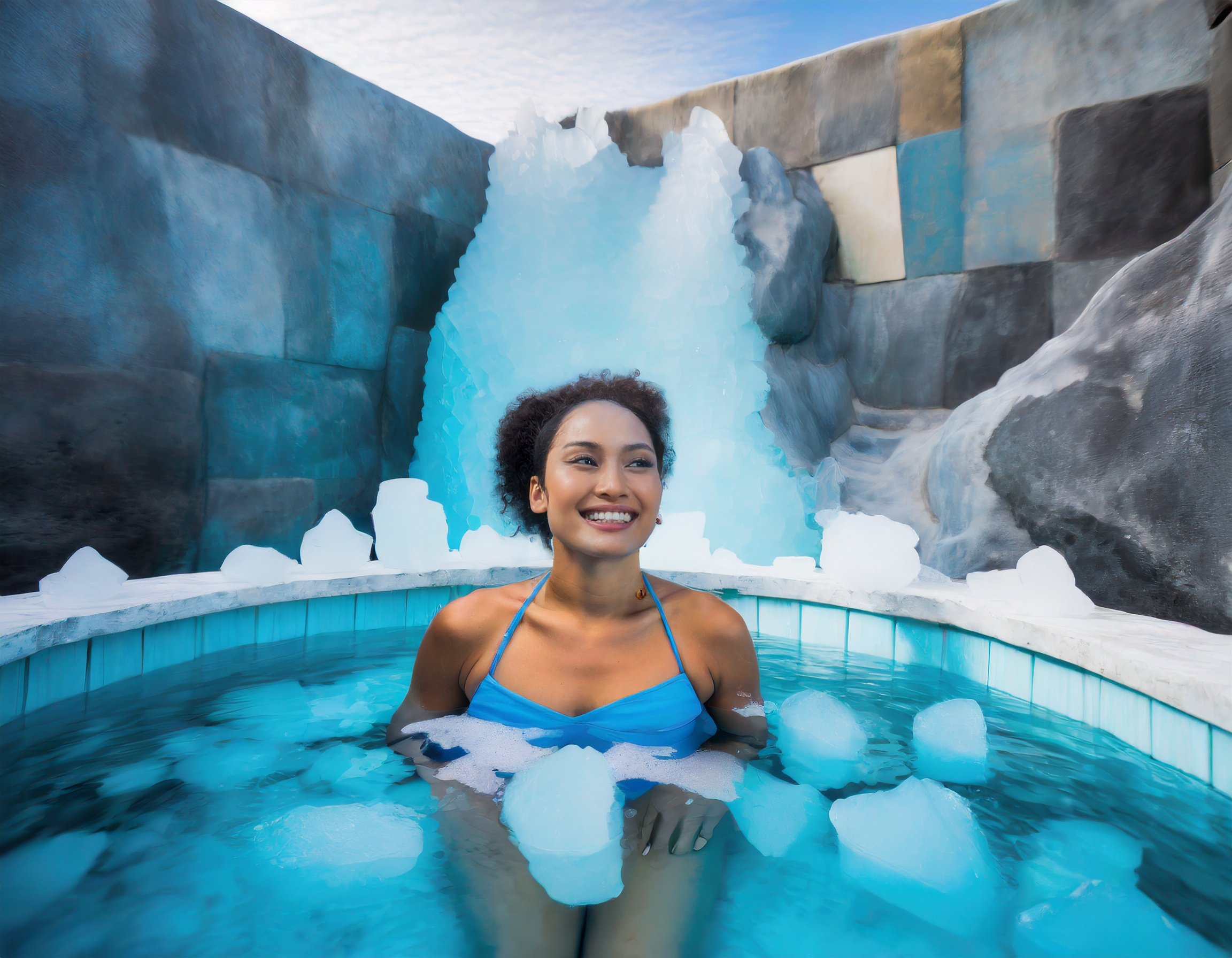
Wrapping Up the Benefits of Ice Baths
In this article, we explored the chilling world of ice baths and highlighted their physical and mental health benefits. We dove deep into the science behind cold water therapy, unwrapped their history, and offered a starting guide to all ice bath enthusiasts.
We explained how cold plunging can help recover muscles after working out and how it boosts your immune system. The article explored the vast benefits that ice bathing has on our mental health, which is especially important in times when we face all the stresses of our daily lives. Finally, we emphasized how ice baths improve your sleep and cognitive functions, leaving you refreshed, invigorated, and ready to tackle all your responsibilities. It’s a well-rounded picture, painting a clear view of why ice baths have remained a staple in wellness routines across ages and cultures.
Enjoying Ice Baths Responsibly as Part of a Varied Wellness Plan
As we come full circle, let’s remind ourselves that an ice bath is not a magical cure for everything. Rather, it is a piece of the puzzle that should fit seamlessly into a balanced, varied plan. This includes:
- a balanced diet,
- regular physical activity,
- mindfulness practices,
- quality sleep, and
- regular health check-ups.
Each individual’s reaction to ice baths can differ, and they can come with some risks. Beginners should start slow, always ensure safety measures, and pay attention to their body’s responses. Those with medical conditions should consult their healthcare provider before diving in.
It’s important to remember that the benefits of ice baths grow with consistent practice. Much like any health practice, it’s about progress, not perfection. So, whether you’re aiming at muscle recovery, or you’re just curious about all the health benefits, ice baths invite you to brave the cold, feel the chill, and emerge invigorated.
Literature sources
- Wang Y, Li S, Zhang Y, Chen Y, Yan F, Han L, Ma Y. Heat and cold therapy reduce pain in patients with delayed onset muscle soreness: A systematic review and meta-analysis of 32 randomized controlled trials. Phys Ther Sport. 2021 Mar;48:177-187. doi: 10.1016/j.ptsp.2021.01.004.
- Kox M, van Eijk LT, Zwaag J, van den Wildenberg J, Sweep FC, van der Hoeven JG, Pickkers P. Voluntary activation of the sympathetic nervous system and attenuation of the innate immune response in humans. Proc Natl Acad Sci U S A. 2014 May 20;111(20):7379-84. doi: 10.1073/pnas.1322174111.
- Diong J, Kamper SJ. Cold water immersion (cryotherapy) for preventing muscle soreness after exercise. British Journal of Sports Medicine 2014;48:1388-1389.
- Janský L, Pospísilová D, Honzová S, Ulicný B, Srámek P, Zeman V, Kamínková J. Immune system of cold-exposed and cold-adapted humans. Eur J Appl Physiol Occup Physiol. 1996;72(5-6):445-50. doi: 10.1007/BF00242274.
- Shevchuk NA. Adapted cold shower as a potential treatment for depression. Med Hypotheses. 2008;70(5):995-1001. doi: 10.1016/j.mehy.2007.04.052.
- Yankouskaya A, Williamson R, Stacey C, Totman JJ, Massey H. Short-Term Head-Out Whole-Body Cold-Water Immersion Facilitates Positive Affect and Increases Interaction between Large-Scale Brain Networks. Biology (Basel). 2023 Jan 29;12(2):211. doi: 10.3390/biology12020211.




